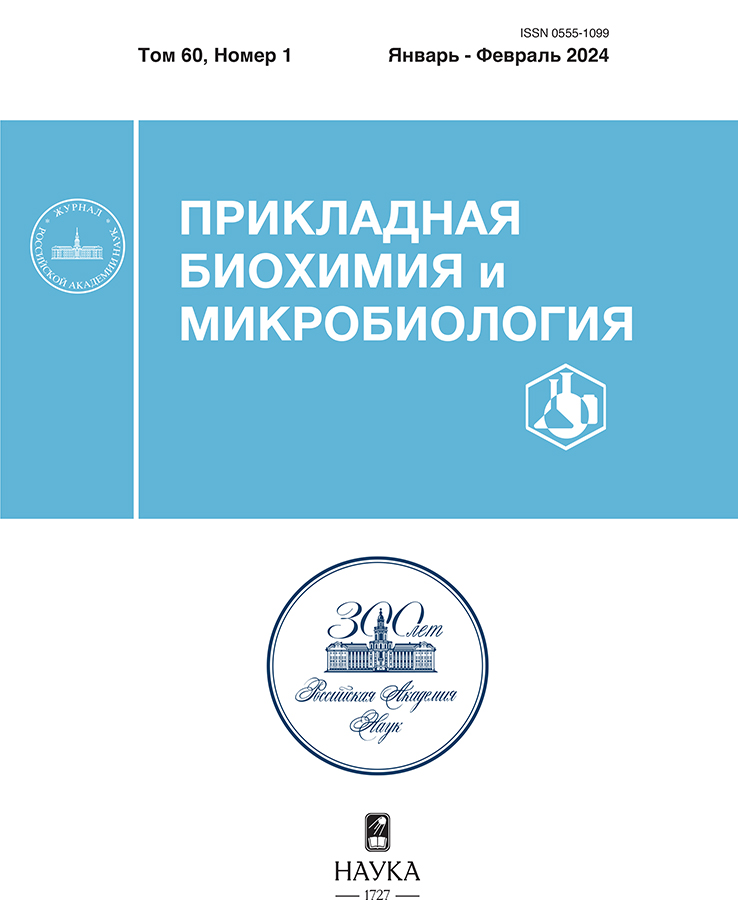Assessment of the Nutrient and Metabolic Profile of the Chum Salmon (Oncorhynchus keta)
- 作者: Abramova L.S.1, Kozin A.V.1
-
隶属关系:
- Russian Federal Research Institute оf Fisheries and Oceanography
- 期: 卷 60, 编号 1 (2024)
- 页面: 90-100
- 栏目: Articles
- URL: https://ter-arkhiv.ru/0555-1099/article/view/674579
- DOI: https://doi.org/10.31857/S0555109924010109
- EDN: https://elibrary.ru/HBTKQM
- ID: 674579
如何引用文章
详细
An analysis of the biological value of chum salmon showed that, in terms of the balance of the amino acid composition of the protein, chum salmon with spawning changes is not inferior to chum salmon without spawning changes (chum salmon “silver”). A higher content of polyunsaturated fatty acids in total lipids, including omega-3, was noted in chum salmon with spawning changes compared to chum salmon “silver”. The metabolic profile of chum salmon samples obtained by NMR spectroscopy showed that the levels of Asp, Glu and Glc markedly increase during spawning migration, which is explained by the limited feeding of fish. The total taste index was calculated of chum salmon «silver», which was 4.06 ± 0.11, and that chum salmon with spawning changes was 3.46 ± 0.09, therefore, according to taste sensations chum salmon «silver» has a richer taste compared to chum salmon with spawning changes. The results of the analysis of the nutritional value and metabolic profile of chum salmon with spawning changes can be used in the manufacture of minced fish for the subsequent production of specialized food products by introducing functional additives that balance the consistency, color, and also give a functional orientation.
全文:
作者简介
L. Abramova
Russian Federal Research Institute оf Fisheries and Oceanography
Email: kozin82a@gmail.com
俄罗斯联邦, Moscow, 105187
A. Kozin
Russian Federal Research Institute оf Fisheries and Oceanography
编辑信件的主要联系方式.
Email: kozin82a@gmail.com
俄罗斯联邦, Moscow, 105187
参考
- Яновская Н. В., Павлова А. О., Кононова Л. А., Бондаренко Г. А., Григорьева Е. Г., Селиванова Т. А. Статистические сведения по рыбной промышленности России. / Ред. К. В. Колончина. М.: ВНИРО, 2022. 86 с.
- Макоедов А. Н., Макоедов А. А. // Известия ТИНРО. 2022. Т. 202. № 2. С. 255–267. https://doi.org/10.26428/1606-9919-2022-202-255-267
- Животовский Л. А., Рубцова Г. А., Каев А. М., Шитова М. В., Смирнов Б. П., Точилина Т. Г., Афанасьев К. И. // Вопросы ихтиологии. 2022. Т. 62. № 3. С. 335–344. https://doi.org/10.31857/S0042875222030249
- Кловач Н. В., Леман В. Н., Ельников А. Н., Вараксин И. А. // Рыбное хозяйство. 2018. № 6. С. 42–47.
- Животовский Л. А., Федорова Л. К., Шитова М. В., Воронова Л. А., Борзов С. И., Погодин В. П., Рубцова Г. А., Афанасьев К. И. // Вопросы рыболовства. 2010. Т. 11. № 2 (42). С. 313–326.
- Reid R. A., Durance T. D., Walker D. C., Reid P. E. // Food Research International. 1993. V. 26. P. 1–9. https://doi.org/10.1016/0963-9969(93)90099-5.
- Холоша О. А., Таргунакова Е. С. // Рыбное хозяйство. 2013. № 5. С. 126–128.
- Горбатенко К. М., Мельников И. В., Овсянников Е. Е., Овсянникова С. Л. // Известия ТИНРО. 2019. Т. 197. С. 152–165. https://doi.org/10.26428/1606-9919-2019-197-152-165
- Hatano M., Mizogami M., Sugawara A., Ando S. // Nippon Suisan Gakkaishi. 1989. V. 55. P. 1623–1627.
- Choon-Kyu P., Sang-Bo S., Eung-Ho L. // Kor. J. Fish. Soc. 1996. V. 29. P. 51–63.
- Shirai T., Fuke S., Yamaguchi K., Konosu, S. // Biochemistry and Physiology Part B: Comparative Biochemistry. 1983. V. 74. № 4. P. 685–689. https://doi.org/10.1016/0305-0491(83)90128-1
- Ando S., Hatano M. // Bull. Japan. Soc. Sci. Fish. 1986. V. 52. № 7. P. 1237–1241.
- Гончаров Н. В., Уколов А. И., Орлова Т. И., Мигаловская Е. Д., Войтенко Н. Г. // Успехи современной биологии. 2015. Т. 135. № 1. С. 3–17.
- Kaneko G., Ushio H., Ji H. // Fish Sci. 2019. V. 85. P. 1–17. https://doi.org/10.1007/s12562-018-1266-6
- Lulijwa R., Alfaro A. C., Young T. // Rev. Aquac. 2022. V. 14. P. 547–577. https://doi.org/10.1111/raq.12612
- Скурихин И. М., Тутельян В. А. Руководство по методам анализа качества и безопасности пищевых продуктов. М.: Медицина, 1998. 342 с.
- Кейтс М. Техника липидологии. Выделение, анализ и идентификация липидов. М.: Мир, 1975. 300 с.
- Липатов Н. Н., Сажинов Г. Ю., Башкиров О. И. // Хранение и переработка сельхозсырья. 2001. № 8. С. 11–14.
- Ando S., Hatano M., Zama K. // Comp. Biochem. Physiol. B. 1985. V. 80. P. 303–307. https://doi.org/10.1016/0305-0491(85)90137-3
- Ando S. // Memoirs of the Faculty of Fisheries Hokkaido University. 1986. V. 33 (1–2). P. 1–95.
- Camacho С., Correia T., Teixeira B., Mendes R., Valente Luísa M. P. et al. // Food Chemistry. 2023. V. 404. Part A. https://doi.org/10.1016/j.foodchem.2022.134505.
- Xue Q., Xue C., Luan D., Wen Y., Bi S., Wei Z., Mou H. // LWT — Food Sci. Technol. 2021. V. 146. P. 111466. https://doi.org/10.1016/j.lwt.2021.111466
- Ninomiya K. // Food Reviews International. 2002. V. 18. № 1. P. 23–38. https://doi.org/10.1081/FRI-120003415
- Heu M. S., Choi Byeong-Dae, Kim K. H., Kang S. In., Kim Y. J., Kim Jin-Soo // Kor. J. Fish. Aquat. Sci. 2015. V. 48. № 1. P. 16–25. https://doi.org/10.5657/KFAS.2015.0016
- Kato H., Rhue M. R., Nishimura T. Role of Free Аmino Аcids and Peptides in Food Taste. Eds R. Teranishi, R. G. Buttery, F. Shahidi Flavor Chemistry American Chemical Society, 1989. 158 p.
- Abramova L. S., Kozin A. V. Nutrishional and Biological Value of Chum Salmon (Oncorhynchus keta) with Spawning Changes. // Proceedings of the International Conference “Scientific Research of the SCO Countries: Synergy and Integration”, 2020. P. 196–203.
补充文件













